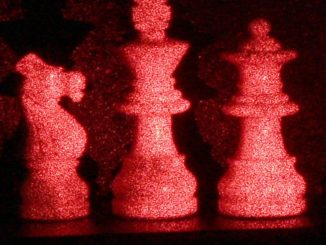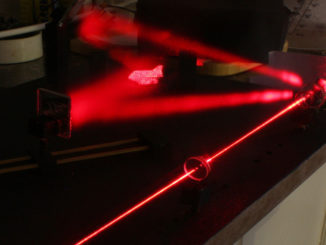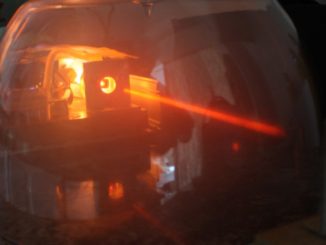
“Your nose will grow…”
I’m sure that we can all recall some of these admonitions from our youth:
“Keep looking like that and your face will stick!” – Why? To what? Surely that isn’t in any medical journal.
“Play with fire and you’ll get burnt.” – Stating the bleeding obvious much?
“You’ll have your eye out with that!” – Yes, because I remember saying to John, “Hey, want to play ophthalmologist with these sticks.” You’d deffo get a clip round the ear for that retort!
The common theme with all these dire warnings was mass destruction and death. My mum’s favourite with me was, “Water and electric don’t mix!”. The thing is that if you say that to a child that is fascinated by both water and electricity (and what child wouldn’t be?) it is inevitable that the two will have to come into contact with each other – it’s simply God’s will. In any case it’s a silly saying as all those lovely three pin sockets that adorn our walls and skirting boards would look pretty stupid if they didn’t work together.
One of the more pleasant side effects of mixing electric and water is the garden water feature. I’m sure that some GP readers will have a garden pond perhaps with a water feature such as a fountain or waterfall. You’ll therefore know that you need a small submersible electric pump to circulate the water. Well it turns out that we can relate a water pump to a Holtz style ESG machine. Hers’s the Doc’s attempt with all the bits labelled:

That photo should become pretty much self explanatory if I draw it like this:

The water (or electrons) get ‘sucked’ into to the pump by a motor and are centrifugally ‘flung’ (or collected by the armature/commutator) through the pipework (wires) to the overflow pool (capacitors) where it spills/falls (spark gap) back to the main pool (charge sheet/you me and that blasted coconut tree!). And the cycle starts again.
Speaking of cycle here’s the charge cycle of the armature disc:

The disc rotates clockwise at a speed of about 500 – 1500 RPM. Starting at position (1) the neutrally charged elements enter the ‘charging zone’. Here the charge sheet ‘gives up’ some electrons to the acrylic disc. At this point we have a ‘charge separation’ but still an overall net-zero charge between all the elements involved (recall, part 1). The disc and the commutator elements rotate to position (2). The elements and disc are now separated from the charge sheet and collector brush leaving a net-negative charge on the elements and a net-positive charge on the charge sheet and brush. This negative charge (electrons) is collected by the negative brush 180 degrees from the positive brush – basically as far away from each other as is possible. Most of those electrons flow into the storage capacitors but some are left behind. These need to be got rid of as they eventually ‘clog’ the machine up. The ‘discharge flag’ at 12 o’clock (3) does that by draining them to ‘ground’ – the wooden base. It’s a bit like a filter on our water pump analogy. Once the DF has ‘cleaned’ the elements the cycle starts again.

Fig 1 shows a confusing photo and the reason the Doc failed his GCSE technical drawing exam. Anyway, it might give you some idea of what’s going on. The main thing is that it shows the shape and position of the charge sheet (CS) and positive collector brush (+B). Recall from part 2 that this replaces Holtz’s stator disc. It’s made from four layers of strong kitchen foil Pritt-Sticked together and attached to a copper foil ‘base’. This contraption is then shaped into a curve (like an on ended sun lounger!) and can slide up to the disc’s surface (Adj). Positioning and pressure are very important for optimal working!
The collector brushes (positive position shown) are made from the core of satellite feed coaxial cable. The high quality type with a solid (not air) insulator. The brush itself is made from 0.03 mm copper foil and soldered to the coax copper conductor. The arrangement sits on top of a wooden post and is held in place by one half of a 15 amp connector block (CB) making it easy to position. The discharge flag (F) is also made from the same cable. There’s quite a bit of voltage that comes out of the discharge flag wire that could be used to trigger an electronic circuit (perhaps to make some sort of automaton) or a meter to show the charge cycle.
Finally, here are a few photos of the little ESG in action:
Triple Spark Exposure
This photo shows three sparks across an 8 mm gap over a 30 second exposure. It also demonstrates that electricity does not always follow the shortest path!

Jumping Jack
Here’s a simple three frame GIF of a spark ‘jumping’ across a gap. The effect was achieved by photographing the spark through the rotating disc (note that the discharge flag is removed). The commutator elements act as a high-speed camera shutter allowing only part of the spark to be visible at one time. After many photos I managed to get these three frames.

Spark Jumping A Gap
Bricks And Water
The first high speed photo of a bullet fired from a gun was taken with a spark. The spark (hot ionised air) lasts for a few hundred micro-seconds facilitating high-speed flash photography. Here I’ve tried to capture falling water drops from a syringe. You can sort of make them out – not easy this high speed photography!

Meanwhile at Peabody Manor…
The Admiral came fluttering into the library as I was just closing my book.
“Had a good time at the pub?”, I asked.
“Ish! The Major and Sly were there. You know, Old Morrham and Stybrooke the local poacher. He’s a wrong’un that Sly! Do you know what he got Wiggers to do?”, he said excitedly.
“What?”, I asked now with curiosity.
“He bet Wiggsby a pint that he couldn’t plant a dart on cuckoo clock’s front door. Of course he did and poor old cuckoo came out in his dressing gown fuming. He said something about guillotines and chucked the dart back a old Wiggsby.”, said Peabody enthusiastically.
“Sounds like a jolly time was had by all.”
“Ish! Trouble is Wiggster ducked and the dart landed on Pickles’ counter top just missing his beer.”
“Who’s Pickles?”
“Pickering, the landlord. Anyway, he must have taken umbrage at this act cuz he kicked us all out saying we were damaging pub property. Ah well, *errrgh*. Hey, fancy that game of Carambole?”, he said as he once again taloned me the socks.
“Oh, go in then.”, I said pouring two large Scotches.
In part 4 I’ll try to explain voltage and current, abuse Einstein’s famous mass/energy equation and perform a spot of welding with watch batteries.
© text & images Doc Mike Finnley 2025



